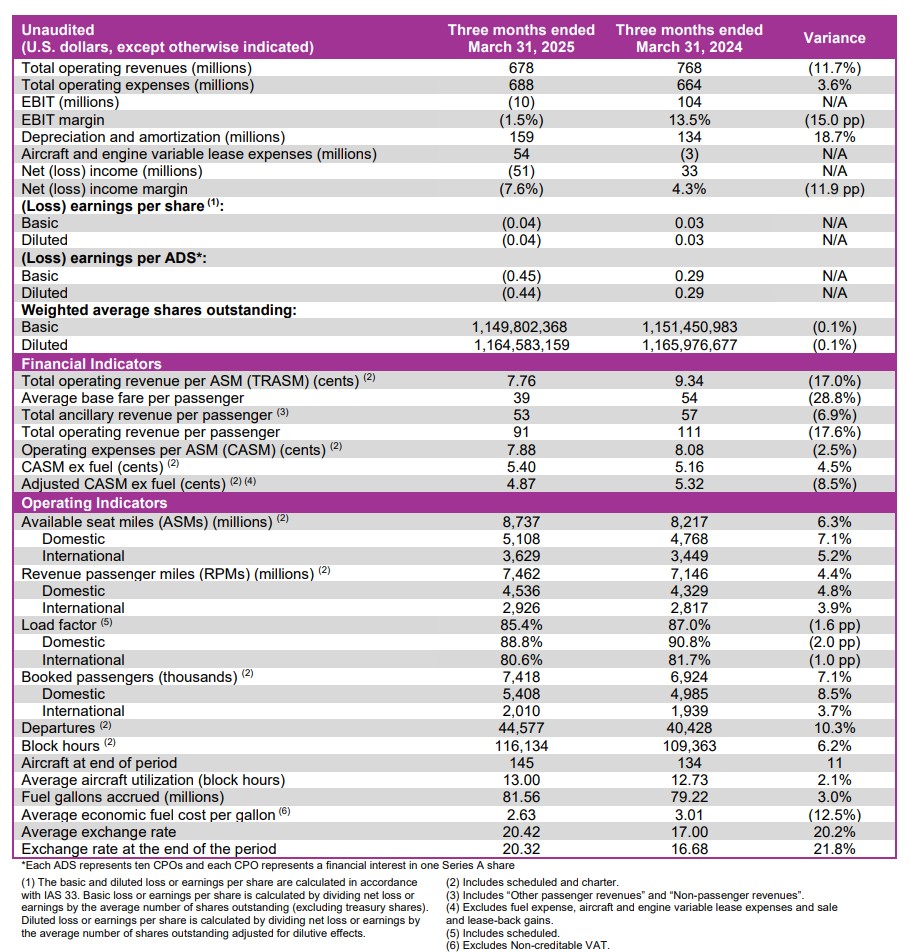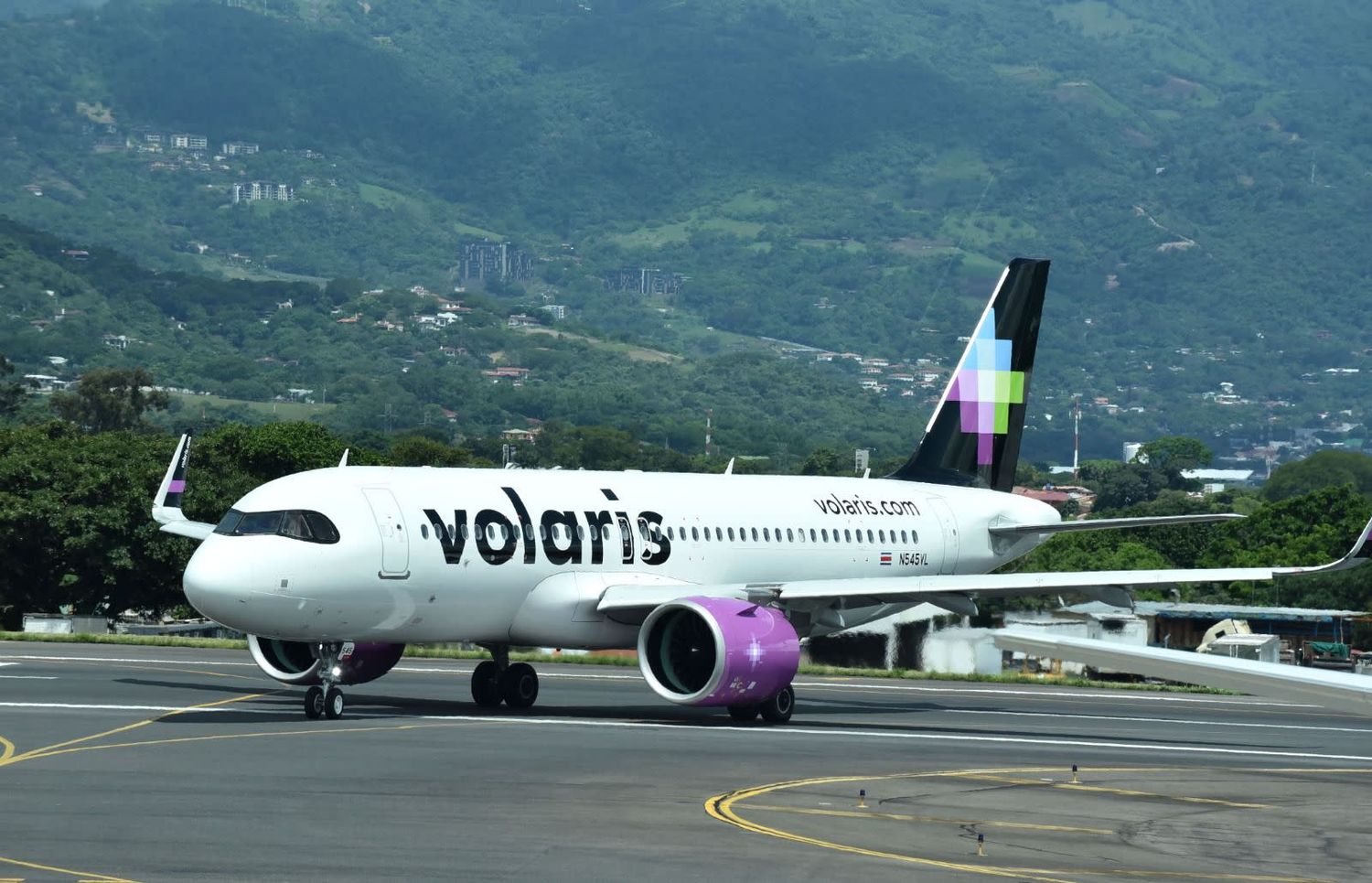Volaris reported a net loss of $51 million for the first quarter of 2025, according to the company's unaudited financial results published on Monday. This contrasts with the $33 million net profit recorded during the same period in 2024.
The airline reported total operating revenues of $678 million, representing an 11.7% decrease compared to the first quarter of the previous year. The company attributed the decline mainly to the depreciation of the Mexican peso against the U.S. dollar and lower total operating revenue per passenger.
TRASM (total revenue per available seat mile) fell by 17% to 7.76 cents, while total revenue per passenger dropped by 17.6% to $91. According to company data, the average base fare per passenger decreased by 28.8% to $39, and ancillary revenue per passenger fell by 6.9%.
Operationally, Volaris reported a 6.3% increase in capacity, measured in available seat miles (ASM), reaching 8.737 billion, and a 7.1% rise in the number of passengers booked, totaling 7.4 million. However, the load factor fell by 1.6 percentage points to 85.4%.
Total operating expenses amounted to $688 million, exceeding operating revenues and representing 101% of those revenues. CASM (cost per available seat mile) decreased by 2.5% to 7.88 cents, while CASM ex fuel (excluding fuel costs) increased by 4.5% to 5.40 cents.
The average economic fuel cost dropped by 12.5%, settling at $2.63 per gallon.
EBITDAR totaled $203 million, down 13.6% year-over-year, with an EBITDAR margin of 29.9%, 0.7 percentage points lower than the previous year. The company’s net debt-to-EBITDAR ratio for the last twelve months rose to 2.7x, compared to 2.6x in the previous quarter.

Commenting on the results, Volaris President and CEO Enrique Beltranena stated, "Volaris remains focused, as always, on disciplined execution as we navigate a period of geopolitical and economic uncertainty." He added, "Our tactical capacity decisions will continue to be based on two fundamental priorities: customer demand and sustained profitability."
Beltranena also emphasized, "We can operate and make network adjustments with flexibility, agility, and resilience, leveraging our cost structure and financial strength." He further affirmed, "We will continue delivering on our value proposition: offering low fares, maintaining an attractive and reliable schedule, and providing relevant ancillary options that enhance the travel experience."
"We are confident in our ability to prepare for a rapid recovery once uncertainty subsides. As we have demonstrated in the past, we are positioning ourselves for a strong rebound," he concluded.
Regarding its financial position, the company reported that as of March 31, 2025, it held $862 million in cash, cash equivalents, and short-term investments, representing 28.3% of the last twelve months' operating revenue.
As for its fleet, Volaris retired one A319ceo and added two A320neo and one A321neo aircraft, reaching a total fleet of 145 aircraft with an average age of 6.4 years, 61% of which are NEO models.
In its outlook for 2025, the company announced that due to macroeconomic uncertainty, it will not provide full-year margin guidance. However, it revised its full-year capacity growth (ASM) estimate to a range of 8% to 9%, down from the previously forecasted 13%.
For the second quarter of 2025, Volaris projects ASM growth between 9% and 10%, TRASM between 7.4 and 7.5 cents, CASM ex fuel between 5.7 and 5.8 cents, and an EBITDAR margin between 24% and 25%.
The company clarified that its projections take into account the expected compensations for aircraft grounded due to GTF engine inspections, as per the agreement reached with Pratt & Whitney.


Comentarios
Para comentar, debés estar registrado
Por favor, iniciá sesión